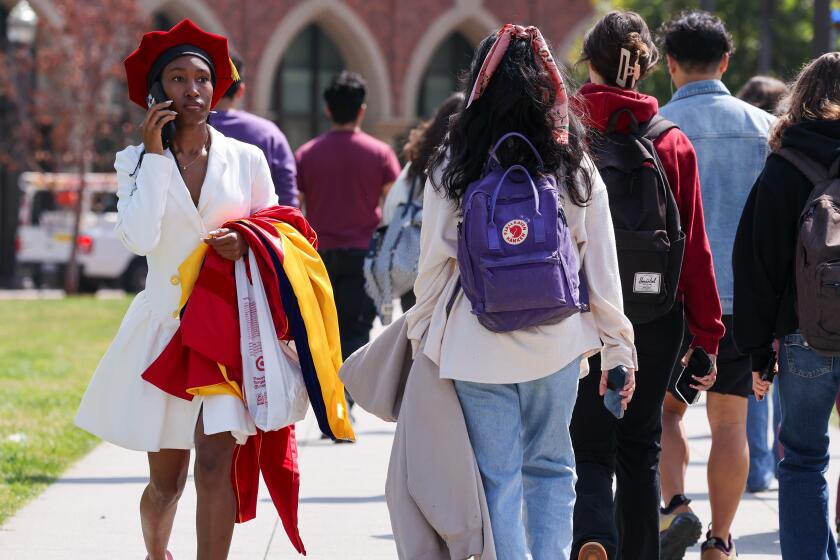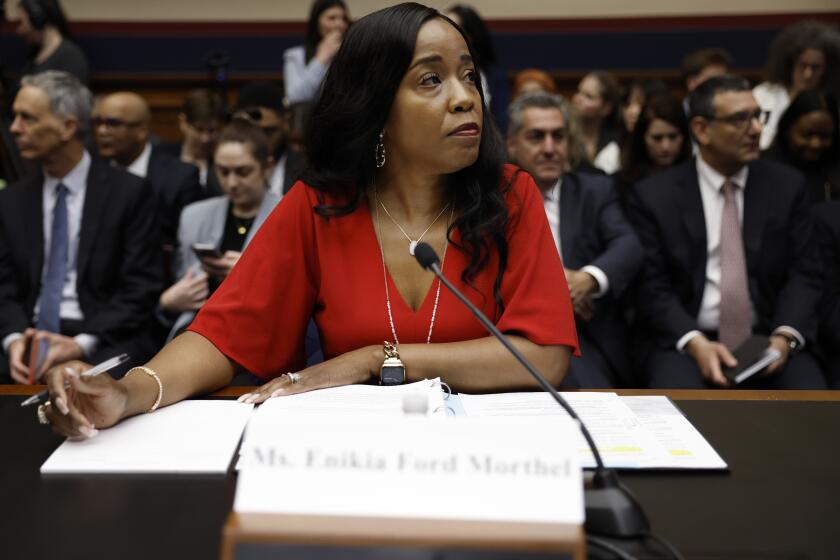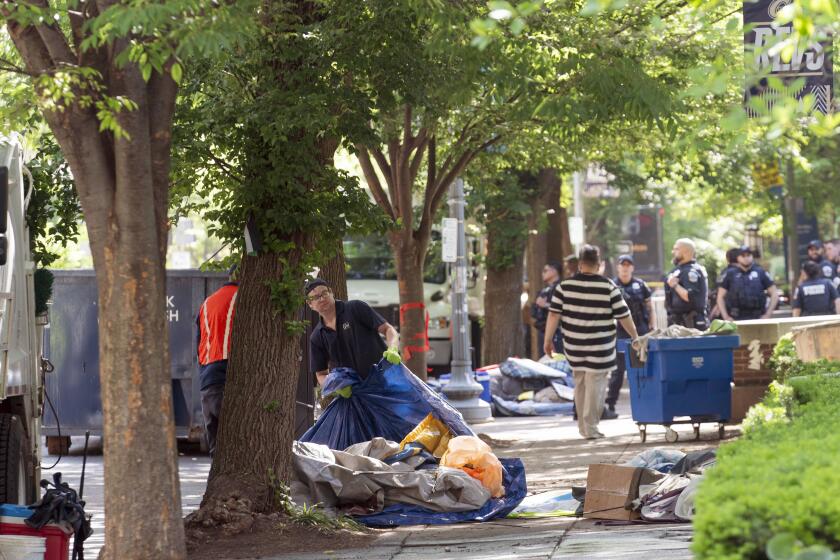‘Already bleeding to death’
As the state weighs cutting about $8.1 billion from public schools, colleges and universities, scores of educators, parents, students and others told lawmakers Monday that such reductions would jeopardize student success and safety in the short term and California’s prosperity in the long term.
A bleak picture emerged of the possible aftermath in the state’s schools: only three guidance counselors for 3,200 students at Berkeley High School; classes increasing to 43 students per teacher in Los Angeles; students in a Sacramento suburb no longer given access to classes required for college admission; and an estimated 250,000 students pushed out of California community colleges by fee increases and financial aid cuts.
“We cannot take more cuts. We are already bleeding to death,” said Pixie Hayward Schickele, a second-grade teacher of English-language learners in Richmond, Calif., who was among a parade of witnesses testifying before the joint state Assembly and Senate budget committee.
In an increasingly ugly fiscal environment, legislators must close a budget gap that has grown to $24 billion. Under Gov. Arnold Schwarzenegger’s proposed budget, schools and community colleges, already reeling from years of reductions, must cut $1.6 billion in spending from the school year that ends June 30 and $4.5 billion from next year’s. The University of California and Cal State systems are also facing nearly $2 billion in cuts. Federal economic stimulus money could backfill some of these cuts.
The governor has also proposed phasing out Cal Grants, the state’s main financial aid program for college students, for a savings of $173 million in 2009-10 and $450 million in 2010-11, officials said. And school bus transportation is also on the table.
California Controller John Chiang has urged the governor and legislative leaders to come up with a plan to balance the budget by June 15 and warned that if they do not, the state will have difficulty arranging loans before it runs short of money by the end of the month.
Though many speakers urged legislators not to make more cuts, several school officials seemed resigned that new funding reductions were inevitable and urged legislators to act quickly, to create more flexibility in how districts can spend money and to ease general-fund reserve requirements.
“Make a decision as soon as you can,” said Michael Ricketts, deputy executive director of the California County Superintendents Educational Services Assn. “We’re at a point right now where the lack of information is probably the biggest hurdle we face.”
Several speakers testified that a proposed cut of more than $300 million in home-to-school bus transportation would leave many students stranded.
“My students live in rural Gilroy, many miles from school, across the 101 Freeway, without a safe route to walk or even ride their bikes,” said Rebecca Scheel, who has been driving school buses in Gilroy for 12 years. “Many parents work in the fields and are not available to take them in the morning to school. There is no public transportation. . . . Our kids desperately need the school bus to get to school safely.”
Students will suffer in other ways as well, said Teresa Stanley, a trustee of the Folsom Cordova Unified School District. Bathrooms will be cleaned once a week, libraries will be closed and students may not have access to the core courses required for admission to UC and Cal State.
“If cuts continue, we can’t be counted on to do much more than provide the basics for kids,” she said. “Nothing extra, nothing that’s going to help them succeed and compete against other students in a global economy.”
School districts and community colleges around the state announced last week that they were eliminating or reducing summer school sessions to save money.
The leaders of all three state higher education systems -- UC, Cal State and the California Community Colleges -- said the governor’s proposal to dismantle the Cal Grant student aid program would have a devastating effect on their students’ ability to afford higher education.
“The hardest-hit will be the lowest income, those with family incomes under $60,000,” said Cal State Chancellor Charles B. Reed.
The legislative analyst’s office suggested that community colleges consider tripling fees, currently set at $20 per unit, one of the lowest rates in the country. But speakers said anything more than a modest increase could drive as many as 250,000 students out of the state’s 110 community colleges.
After hours of testimony, there were few conclusions.
“I feel their pain. I share their pain. I share all their concerns. The challenge is, how do we balance the collapse of the world economy with continuing to educate our children,” said Assemblywoman Noreen Evans (D-Santa Rosa), committee chairwoman. “So far, we’re not hearing the answers to that.”
--
gale.holland@latimes.com
Times staff writer Shane Goldmacher contributed to this report.
More to Read
Start your day right
Sign up for Essential California for news, features and recommendations from the L.A. Times and beyond in your inbox six days a week.
You may occasionally receive promotional content from the Los Angeles Times.







